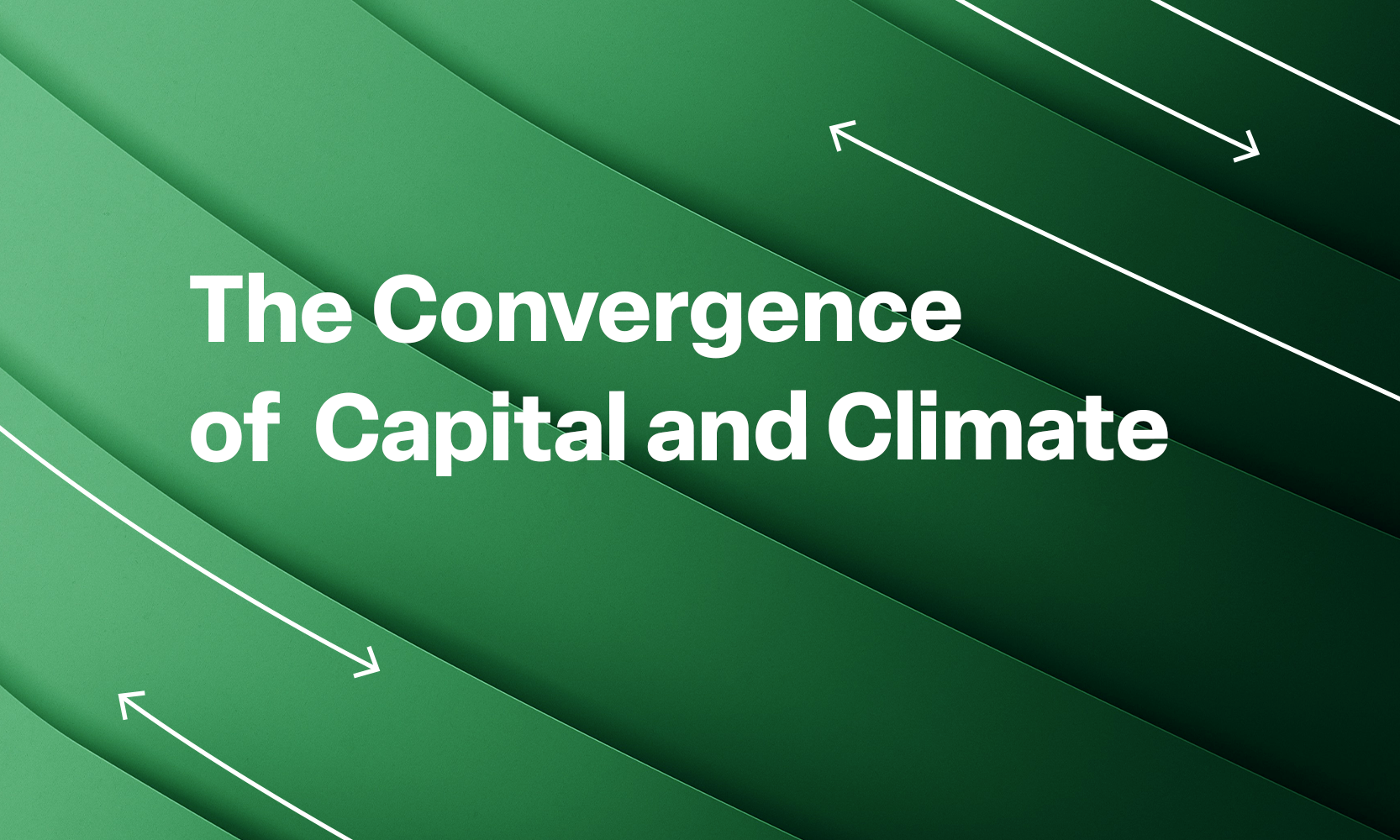The convergence of capital and climate: Why the CFO must think like a CSO
In the modern corporate landscape, the future of business is being decided in two boardrooms — the one where capital is allocated, and the one where sustainability goals are set. One speaks the language of profit and performance; the other, of purpose and planetary boundaries. Yet both seek the same outcome: long-term value creation.
For decades, organizations have built parallel verticals to pursue these aims. The Chief Financial Officer (CFO) manages fiscal discipline, return on investment, and shareholder confidence. The Chief Sustainability Officer (CSO) leads climate strategy, ESG performance, and compliance with environmental mandates. Each function is well-defined, expertly staffed, and essential to enterprise survival.
But as global markets shift from a linear to a low-carbon economy, the boundaries between these two worlds are collapsing. Every financial decision now has a sustainability implication, and every sustainability decision has a financial consequence. The question is no longer whether sustainability should align with finance — it is whether the two can afford to remain separate at all.
In an era where capital markets are pricing climate risk, and regulators are making sustainability disclosures as binding as financial ones, the notion of keeping finance and sustainability apart has become outdated.
The structural disconnect
In most organizations, sustainability and finance operate as separate domains, each with its own metrics and decision hierarchies. For example, consider a manufacturing company evaluating a retrofit of its HVAC system to improve energy efficiency. The sustainability team proposes the upgrade, outlining its environmental and operational benefits. Yet, before anything else, the first question arises, “What will this cost?”
If the investment appears too high, the initiative is postponed, downscaled, or absorbed into a future budget cycle. What unfolds is a familiar paradox: the very actions that enhance operational resilience and reduce future risk are constrained by short-term financial logic.
This reflects not a flaw in strategy but a flaw in structure. Corporate design still treats finance as the custodian of capital and sustainability as the steward of ethics, when both govern the same currency of value
The interdependence between finance and sustainability
From a systemic perspective, the two domains are inseparable. Every tonne of avoided CO₂, litre of water saved, or megawatt-hour of renewable energy procured carries a direct financial impact. These outcomes translate into cost savings, avoided liabilities, access to green financing, and improved investor confidence. Conversely, every capital expenditure decision carries embedded environmental risks — from carbon pricing exposure to supply-chain disruptions and asset obsolescence.
Leading research highlights this convergence. EY observes that CFOs are evolving from “scorekeepers” to “value architects,” integrating non-financial metrics into enterprise valuation frameworks. The World Economic Forum similarly calls on financial leaders to treat sustainability data with the same rigour as financial data, stating that “sustainability information is now as important to decision-making as financial information.”
When viewed through this lens, sustainability is not a cost centre; it is a long-term investment in resilience, risk mitigation, and competitiveness.
Evidence from global practice
Empirical data confirms that finance–sustainability integration drives measurable performance.
A 2025 BDO survey found that 91% of organisations that strategically integrate sustainability expect revenue growth within the following year, compared to 74% of those that do not.
Yet readiness remains limited. Only 22% of CFOs report that their organisations are fully prepared for emerging sustainability reporting and assurance requirements. Deloitte’s global insights show that merely 16% of companies assign shared accountability for sustainability reporting between CFOs and CSOs.
A study published in Business Strategy and the Environment further revealed that CFO involvement has a stronger positive impact on sustainability disclosure quality than CEO engagement, demonstrating that financial stewardship is critical to credible sustainability governance.
These findings collectively underline a clear message: when finance owns sustainability outcomes, both disclosure quality and enterprise performance improve.
The risk of operating in silos
Maintaining separation between finance and sustainability is no longer a neutral choice: it introduces systemic risk. When sustainability sits outside core financial governance, organisations face:
Strategic Delay: Projects with clear long-term benefits are sidelined due to short-term cost focus.
Metric Misalignment: Financial and environmental indicators operate in isolation, limiting data-driven decision-making.
Reporting Vulnerability: ESG disclosures without financial validation may lack audit credibility.
Missed Opportunity: The absence of shared governance prevents recognition of sustainability as a competitive differentiator or source of new revenue (for instance, through circular models or carbon credits).
Siloed decision-making, therefore, doesn’t just constrain environmental progress — it undermines financial foresight.
Toward integrated governance
Forward-looking organisations are beginning to close this divide by designing integrated governance models where sustainability and finance are co-owned at the highest level.
This begins with shared accountability, in which CFOs and CSOs are aligned on key sustainability KPIs, from emissions intensity and carbon pricing to capital exposure and resource productivity. And data systems are being restructured to embed environmental metrics directly into financial planning and analysis (FP&A) platforms, ensuring that sustainability indicators inform capital budgeting and forecasting.
Investment evaluation frameworks are also evolving. A retrofit proposal that once justified itself through payback period alone now includes avoided emissions, future carbon credit revenue, and compliance alignment as quantifiable returns.
Executive incentives are increasingly tied to joint KPIs that blend financial and environmental performance. As PwC notes, CFOs must “treat ESG data with the same accuracy, traceability, and assurance as financial data.” This convergence marks a decisive cultural shift from sustainability reporting to sustainability accounting.
Ultimately, a future-ready organisation is one where the fiduciary and ecological dimensions of value are governed by the same logic, same data, and same accountability framework.
A new leadership imperative
The integration of finance and sustainability is not just an operational alignment: it is a leadership transformation.
Should the CFO also be accountable for sustainability outcomes? Should the CSO have a decisive role in capital allocation? Or, more radically, should the two roles evolve toward a shared mandate of integrated value creation?
In the age of the Task Force on Climate-related Financial Disclosures (TCFD), ISSB standards, and investor-led ESG assurance, this convergence is inevitable. The organisations that will lead the next decade are those that view sustainability as a financial strategy, not a communications agenda; and finance as a catalyst, not a constraint.
Finance and sustainability are no longer parallel disciplines — they are converging forcesthat define the future of corporate performance.
The integration of these two pillars determines not just profitability, but credibility, resilience, and long-term continuity. Because the real leadership question is not how much will sustainability cost, but rather, how much will it cost us if we do not integrate it into finance now.

